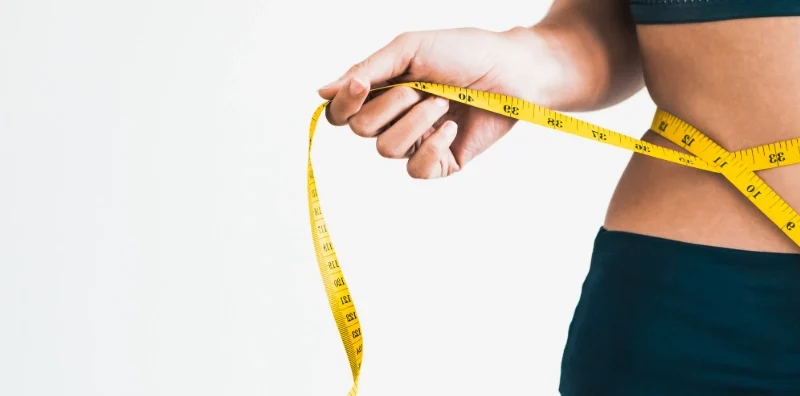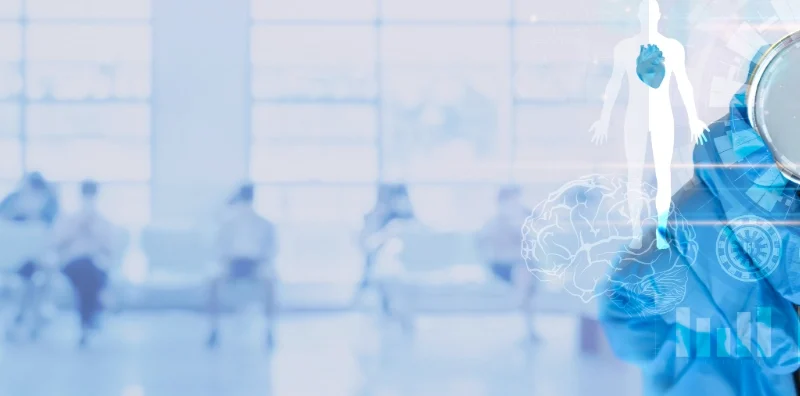In my previous blog, I discussed the realities of the coronavirus pandemic. As a quick recap, the coronavirus (SARS-CoV-2) is here to stay. That means it will be part of our future just as climate change. Second, after spending more than 45 years in medical research and biotechnology, I have very little confidence in the happy science talk about developing highly effective vaccines to the SARS-Cov-2 virus. The lack of any long-term immunity to the common cold (other coronaviruses cause 10-30 percent of common colds) coupled with a lack of a highly effective influenza vaccine doesn’t inspire confidence that any new vaccine breakthroughs are just around the corner.
Furthermore, I anticipate any antibodies created by a viral infection or potential vaccine will not be long-lasting. This lack of long-term immunity is why we keep catching a common cold and coming down with the flu. Likewise, I have even less confidence in discovering anti-viral drugs for treating Covid-19. So, do you just throw up your hands in despair? I believe the answer is no. My enthusiasm comes from understanding how your diet works with your immune system to protect you from infectious disease and what you can do on a lifetime basis to maintain your immune system on high alert.
How your body works to protect you against respiratory viral invasions
After millions of years of evolution, our primary defense to infection by viruses in general, and respiratory viruses, in particular, remains to maintain our natural barriers to infection. The first of these barriers is the mucus membrane that lines our nasal passages and continues throughout the gut. This mucus barrier is a type of “no man’s land” to prevent pathogens like viruses that we breathe or eat from getting into your tissues. The thicker the mucus barrier, the more difficult it is for any virus to reach the surface of our various tissues. The thickness of that mucus barrier is controlled to a great extent by your diet. The mucus itself is primarily composed of a carbohydrate polymer (mucin) secreted by the goblet cells located throughout the nasal passages, lung, small intestine, the colon, and even in the eye (1).
If a virus gets past this first physical barrier, it then faces another one formed by the epithelial cells that line the tissue. These cells form a tight junction to prevent the entry of viruses into the tissue itself. One often hears about a “leaky gut.” This term means the permeability of the tight junctions formed by epithelial cells that line the gut is significantly increased. This increase in permeability of the tight junctions makes it possible for bacterial fragments or a virus to more easily enter into the blood giving rise to an inflammatory response. The same molecular players that give rise to a leaky gut also give rise to a “leaky lung” (2,3).
If these two physical barriers are breached, then your body turns to your innate immune system to pick up the challenge for the next round of defense. The innate immune system is ancient in that it recognizes broad molecular patterns. The entry of foreign antigens into the blood interacts with various Toll-Like Receptors (TLRs) to activate the gene transcription factor NF-κB to mount an inflammatory response. There are nine TLRs in humans, each of which is fine-tuned for specific microbial patterns. Some recognize molecular patterns indicating a bacterial infection, and others recognize patterns indicating viral infections. If any of the TLRs on the surface of the cell is activated, then a signal is relayed into the interior of the cell. The result is the activation of NF-κB to begin to start an inflammatory response. Once activated, NF-κB generates a broad range of pro-inflammatory mediators such as cytokines and eicosanoids that can leave the infected cell to alert other nearby cells via receptors on their cell surfaces that a microbial invasion is taking place so that they should begin to activate NF-κB in their cells. Another consequence of NF-κB activation is that normally benign white cells in your bloodstream are transformed by these pro-inflammatory mediators (primarily by cytokines, but also by eicosanoids) into killing machines (i.e., neutrophils and macrophages). These cells are directed to the attack site by molecular flares (i.e., chemotaxis) provided by the same cytokines and eicosanoids. Once they arrive at the site of infection, that area is turned into a killing field to attack the virus directly but also generating a lot of collateral inflammatory damage to nearby cells. Eventually, if your Resolution Response is working correctly, the cellular debris is cleared by resolvins, and tissue repair begins with the activation of AMPK (4).
Cytokine Storms
Not everyone who is infected with the SARS-CoV-2 will have the same clinical outcomes. Some will have no symptoms (i.e., they are asymptomatic), others will have mild symptoms, and still, others will have life-threatening symptoms requiring treatment in intensive care units, and, in some cases, there will be a need to use ventilators to survive. Finally, a percentage of the infected will die. What that ultimate mortality percentage of the SARS-CoV-2 infection remains unknown, but I am estimating about 0.5 percent of those infected will eventually die. This mortality rate is about five times greater than might be expected for an infection from the influenza virus.
The severity of the consequences of the SARS-CoV-2 virus infection appears to be related to the total levels of cytokines produced by your innate immune system. The production of such cytokines is initially required to mount an inflammatory response to the virus. But if that cytokine production is not turned off by inhibition of NF-κB, then this initial cytokine surge can develop into a growing cytokine storm leading to massive lung problems as well as some indications of damage to the heart (5). Those who survive such a cytokine storm appear to have significant fibrosis in tissues that may compromise their organ function for years to come (6).
Why Does A Cytokine Storm Develop?
The short answer is a blocked Resolution Response. If your Resolution Response is blocked, you are short-circuiting the wide variety of defense mechanisms that I just described above that are designed to protect you from viral infections and the cytokines they generate.
It’s not that the SARS-CoV-2 virus is deadly by itself, but infection with the virus exposes existing unresolved inflammation and adds to it. I believe that the SARS-CoV-2 virus is essentially the straw that breaks the camel’s back. Unresolved inflammation associated with underlying co-existing conditions such as obesity, diabetes, heart disease, and other chronic conditions (including aging) is always associated with increased levels of cytokines in the body. The viral infection simply adds to that existing cytokine burden until it crosses a threshold that completely overwhelms your internal Resolution Response that is designed to reduce, resolve, and repair the damage caused by any injury that generates inflammation. Once that cytokine threshold is reached, the generation of addition cytokines by the virus becomes self-perpetuating because your Resolution Response is unable to inhibit NF-κB sufficiently.
Testing Is Essential
Just as we don’t have convenient testing for the virus or antibodies to the SARS-CoV-2 virus, simple testing for cytokines is even further down the road. Fortunately, a simple finger stick for measuring your AA/EPA ratio in the blood is an excellent surrogate marker for the levels of cytokines in your body (7). The higher your AA/EPA ratio, the higher the levels of cytokines in the blood. An existing high AA/EPA ratio indicates that infection by the SARS-CoV-2 virus will likely send your cytokines into hyperdrive, thus giving rise to the increasing severity of complications of Covid-19. Once these cytokine levels in the blood increase, they can begin to attack other organs (like the heart) in addition to their negative impact on the lungs. One of the best ways to reduce existing unresolved inflammation in general and the AA/EPA ratio, in particular, is following Pro-Resolution Nutrition using high-dose EPA and DHA. For most individuals, this will probably require between 2.5 to 7.5 grams of EPA and DHA per day. For comparison, the average intake of EPA and DHA for Americans is about 0.15 grams per day.
Optimizing Your Resolution Response by Pro-Resolution Nutrition
There is no magic bullet in nutrition. This statement is especially true for optimizing your Resolution Response. You require a continuous dietary orchestration of hormones and inducible genes to be successful. Pro-Resolution Nutrition is a systems-based approach to nutrition. Thus, every component of the Resolution Response must be working in close cooperation for it to be optimized to reduce a potential cytokine storm.
How Pro-Resolution Nutrition affects, each stage of your various defenses against viral infections is explained below.
Physical Barriers Modulated by Pro-Resolution Nutrition
Maintaining your barriers to viral entry consists of the mucus barrier and the tight epithelial junctions lining the lung. Maintaining these physical barriers is a joint effort led by all the dietary components (Zone diet, omega-3 fatty acids, and polyphenols) that can affect your Resolution Response.
The Zone diet is a calorie-restricted, anti-inflammatory diet that is protein-adequate, carbohydrate-moderate (but rich in fermentable fiber), low-fat (and especially low in saturated and omega-6 fats) diet. The Zone diet was developed to reduce the levels of eicosanoids that increase the intensity of inflammation (8,9). The high levels of fermentable fiber in the Zone diet are also the necessary ingredient for the microbes in the gut to produce short-chain fatty acids (such as butyric acid). These fermentation products are critical to promote mucus synthesis throughout the body, including the lining of the lung. However, that is is only your first step toward optimizing your Resolution Response. You also have to be able to generate enough resolvins derived from omega-3 fatty acids (EPA and DHA) that can also support mucin formation (10). Finally, the activation of AMPK by dietary polyphenols can promote the synthesis of proteins necessary to maintain tight junctions in the epithelial wall (11). The bottom line is by following an aggressive Pro-Resolution Nutrition program; you can improve the quality of the physical barriers that are your first line of defense to prevent viral penetration into a tissue.
Preventing Cytokine Storms By Pro-Resolution Nutrition
Once the virus enters the tissue, your next defense is the activation of the cell’s master switch (NF-κB) for cytokine production. The surge of cytokines produced by NF-κB upon the viral infection is needed to start the initiation of the inflammatory process that proceeds with the migration of neutrophils and macrophages into the injury site. For the SARS-CoV-2 virus, this target organ is usually the lung.
The Zone diet is an anti-inflammatory diet, meaning that it reduces the generation of excess diet-induced inflammation. Following the Zone diet ensures that the initial surge of cytokines caused by the viral infection doesn’t reach such an elevated level that makes it difficult to turn off their production. The ultimate reduction of cytokine synthesis comes with the activation of AMPK by polyphenols that inhibit the activity of NF-κB, thus shutting down excess cytokine formation (12).
Sandwiched between those two separate events of turning on and turning off cytokine production is the stopping of swarming of newly activated neutrophils into the injury site followed by the migration of pro-inflammatory macrophages. That task is the responsibility of omega-3 fatty acids, which are substrates for the synthesis of resolvins. These hormones not only stop the swarming of the neutrophils into the injury site but also transform the pro-inflammatory M1 macrophages into the anti-inflammatory M2 macrophage that clears the tissue of cellular debris that would otherwise stimulate new rounds of cytokine production (13,14).
Thus, as well as maintaining the physical barriers to the viral infection, Pro-Resolution Nutrition must be in place to ensure the innate immune system doesn’t go into hyperdrive, causing an overproduction of cytokines that would lead to a cytokine storm.
Finally, an optimal Resolution Response is critical to prevent the formation of scar tissue (i.e., fibrosis) in the lung that often occurs in survivors of a cytokine storm the occurs in severe Covid-19 cases. Fibrosis leads to the acceleration of the aging of not only the lung, but other organs such as the heart in which fibrotic damage can also occur (6).
Timing Is Everything
What I have tried to emphasize in this blog is that a robust Resolution Response is currently your best “drug” to deal with eventual SARS-CoV-2 infection. Unfortunately, it takes time to optimize your internal Resolution Response even with vigorous use of Pro-Resolution Nutrition. It takes at least three months of aggressive practice of Pro-Resolution Nutrition to optimize your internal Resolution Response. Furthermore, it takes even less time (perhaps a few weeks) to lose much of that optimization once you stop practicing Pro-Resolution Nutrition. Since viral infections (as well as all injuries that induce inflammation) are at random, it means you have to maintain a consistent Pro-Resolution Nutrition program for life if you want to have optimal healing outcomes that lead to a longer healthspan.
Summary
The SARS-CoV-2 virus is here to stay. Keeping your body prepared to contain the damage it can potentially cause is totally under your dietary control by maintaining an optimal Resolution Response. Furthermore, because of climate change and globalization, you can be sure there will be a continuing surge of future new microbial insults to your immunological defense systems. Your best defense to the current and future microbial threats remains a robust Resolution Response. Or you can put your fate into the hands of the pharmaceutical industry and hope they will come up with new remarkable vaccines and anti-viral drugs that allow you to eat whatever you want.
References
- Ma J, Rubin BK, and Voyow JA. “Mucins, mucus, and goblet cells.” Chest 154: 169-176 (2018)
- Suzuki T. “Regulation of intestinal epithelial permeability by tight junctions.” Cell Mol Life Sci 70: 631-659 (2013)
- Ferrer R and Moreno JJ. “Role of eicosanoids on intestinal epithelial homeostasis.” Biochem Pharmacol 80: 431-438 (2010)
- Sears B. The Resolution Zone. Zone Press. Palm City, FL (2019)
- Shi S, Qin M, Shen B, Cai Y, Liu T, Yang F, Gong W, Liu X, Liang J, Zhao Q, Huang H, Yang B, and Huang C. Association of cardiac injury with mortality in hospitalized patients with COVID-19 in Wuhan, China.” JAMA Cardiol doi:10.1001/jamacardio.2020.0950 (2020)
- Wang D, Hu B, Hu C, Zhu F, Liu X, Zhang J, Wang B, Xiang H, Cheng Z, Xiong X, Zhao Y, Li Y, Wang X, and Peng X. “Clinical characteristics of 138 hospitalized patients with 2019 novel coronavirus–infected pneumonia in Wuhan, China.” JAMA 323: 1061-1069 (2020)
- Endres S, Ghorbani R, Kelley VE, Georgilis K, Lonnemann G, van der Meer JW, Cannon JG, Rogers TS, Klempner MS, Weber PC, Peter C. Weber, Schaefer EJ, Wolff SM, and Dinarello CA. “The effect of dietary supplementation with n-3 polyunsaturated fatty acids on the synthesis of interleukin-1 and tumor necrosis factor by mononuclear cells.” N Engl J Med 320: 265-271 (1989)
- Sears B. The Zone. Regan Books. New York, NY (1995)
- Bell SJ and Sears B. “The Zone diet: An anti-inflammatory, low glycemic-load diet.” Metabol Synd and Related Disord 2:24-38 (2004)
- Dartt DA, Hodges RR, and Serhan CN. “Immunoresolvent resolvin D1 maintains the health of the ocular surface.” Adv Exp Med Biol 1161: 13-25 (2019)
- Olivier S, Leclerc J, Grenier A, Foretz M, Tamburini J, and Viollet B. “AMPK activation promotes tight junction assembly in intestinal epithelial Caco-2 cells.” Int J Mol Sci 20: E5171 (2019)
- Chen X, Li X, Zhang W, He J, Xu B, Lei B, Wang Z, Cates C, Rousselle T, and Li J. “Activation of AMPK inhibits inflammatory response during hypoxia and reoxygenation through modulating JNK-mediated NF-κB pathway.’ Metabolism 83: 256-270 (2018)
- Serhan CN, Chiang N, and Dalli J. “The resolution code of acute inflammation: Novel pro-resolving lipid mediators in resolution.” Semin Immunol 27: 200-215 (2015)
- Dalli J and Serhan C. “Macrophage proresolving mediators-the when and where.” Microbiol Spectr 2016 4:3 (2016)





